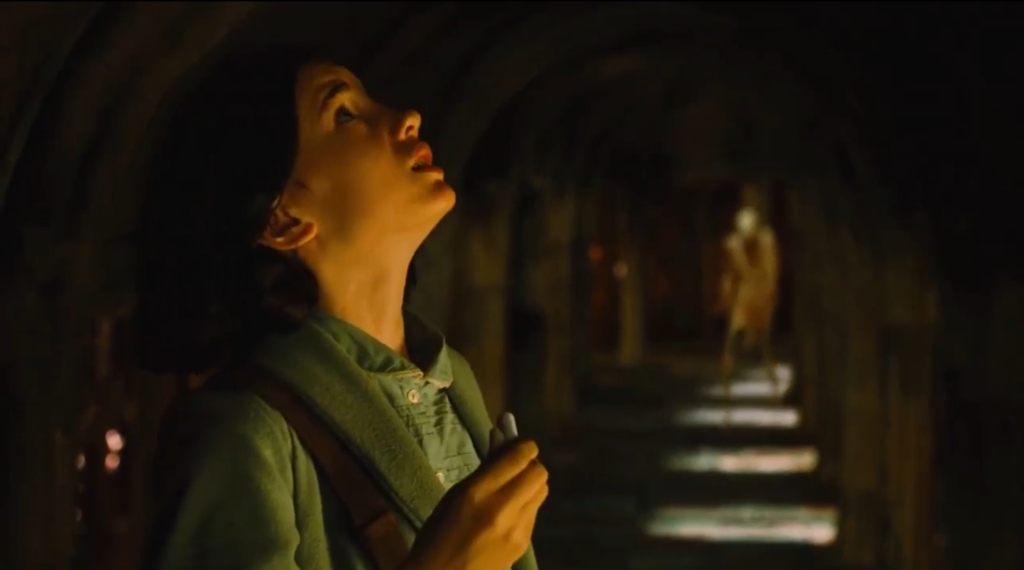We were tasked to analyse the key elements of film form of the “Pale Man sequence” of Pan’s Labyrinth (00:55:21-01:02:19). This involved a detailed analysis of cinematography, sound, mise-en-scène, editing and performance during this sequence.
Cinematography
The scene begins on a wide shot which arcs around, depicting Ofelia taking out her storybook. First and foremost, this contextualises the location of the scene being Vidal’s bedroom but this shot also informs the viewer that Ofelia is alone. We then cut to an over-the-shoulder closeup of her storybook depicting the pictures coming to life. This emphasises her complete immersion within her own fairytale. Subsequently, as Ofelia narrates the story, we cut to an appropriate picture in order to appropriately guide the viewer through the fairytale.
As Ofelia climbs into the mysterious gateway, a wide shot depicts her existing between the two realms. The camera then pulls back in order to provide the viewer with a sense of scale. After a transition which implies a passage of time, we shift into an extreme long shot which portrays Ofelia peering into the ominous lair. At this point, there is a notable change in lighting and colour palette from one shot to the other which clearly defines the other-worldliness of the hellish realm from reality. We persistently cut between the two worlds in order to make this distinction perspicuous.
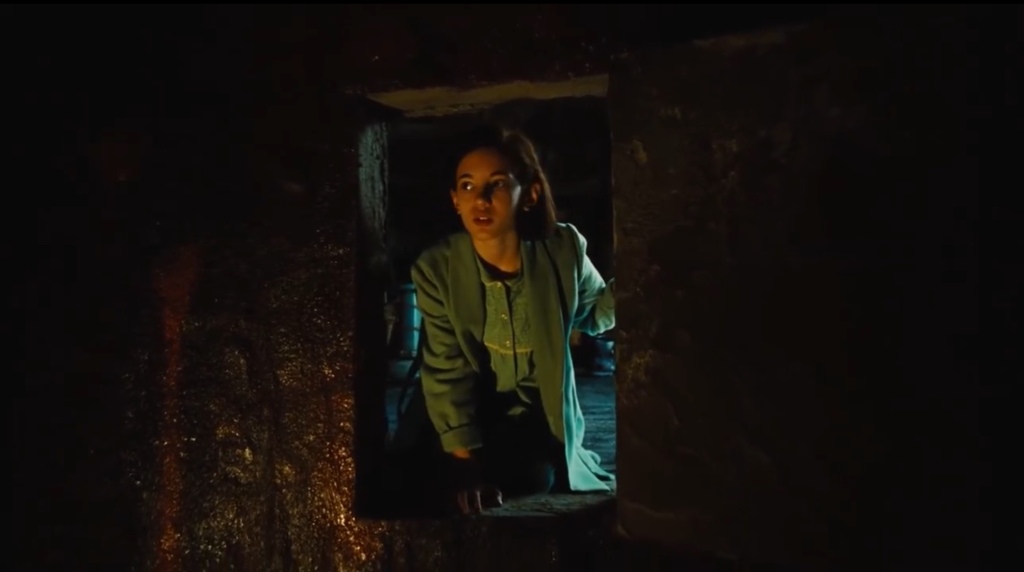
The next shot is a closeup of an hourglass which indicates its importance. The idea of a ‘race against time’ is planted in the viewer’s mind which builds suspense. We then cut to a wide shot from behind Ofelia that reveals the new, unseen area that she is entering. The camera crabs from left to right, tracking Ofelia’s movements from the opposite side of the table. Her trance-like state is portrayed as she observes the tantalising food that lies on the table. The camera then comes to rest on a two shot of Ofelia looking at the Pale Man, it lingers for a while in order to let the viewer observe this enigmatic humanoid creature. The camera then slightly rises to emphasises the Pale Man’s oppressive and imposing nature.
An ensuing informatory shot depicts a mysterious pair of eyes on a plate as well as the Pale Man himself without any eyes. Through this, the viewer can infer that the eyes belong to the Pale Man. We then cut to a reactionary shot as Ofelia picks the eyes up, as her disgusted expression is displayed. During this shot, the doors of the lair are present in the background, foreshadowing their later significance.
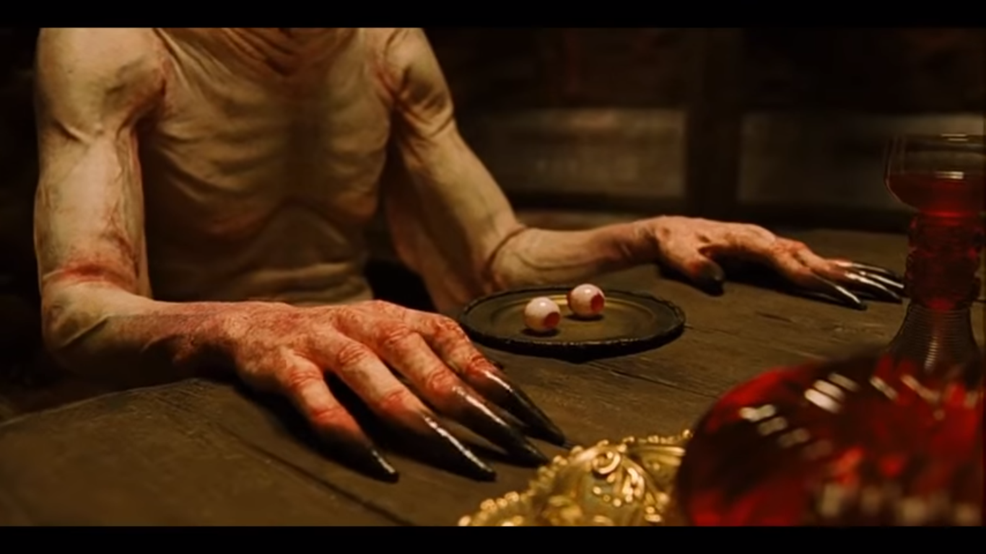
After this, we cut over-the-shoulder shot which instills a sense of revulsion within the viewer. This is due to the fact that the Pale Man must receive an appropriate amount of screen time in order to appear menacing. We then cut to a gliding worms-eye-view shot looking up at the ceiling which depicts a series of pictures of the Pale Man slaughtering children. The camera then pedestals up to reveal a pile of shoes which informs the viewer of the sheer amount of victims slaughtered by the Pale Man, the focus is then pulled from Ofelia’s stunned expression to the shoes themselves.
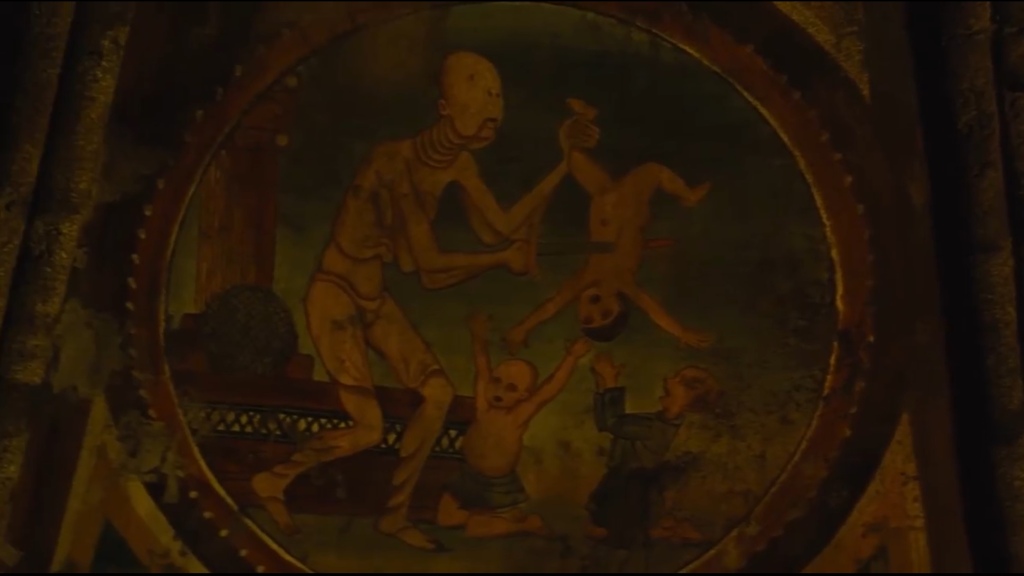
As Ofelia lets the fairies free out of the bag, a tracking shot trails their movements which focus our attention upon them. There is then a closeup reactionary shot of Ofelia as she holds the key which portrays her coming to the realisation of what she must do. We then cut to a closeup of the hourglass during which the camera pushes in to emphasise the fact that Ofelia doesn’t have much time remaining.
As we cut to an angle that is behind the keyhole, a frame within a frame is created. Ofelia’s determined expression is focused upon as she reaches further within to claim the blade. The blade in question receives a closeup, signifying its importance. We then cut to a wide shot of Ofelia and the Pale Man, which pushes in slowly. Through this, anticipation is created as he remains motionless. His dormancy is juxtaposed by the fairies who are energetically darting around the area.
The camera then tracks back, pushes in and pans to the right in order to reveal the forbidden plum-sized grapes. There is a focus pull from Ofelia to the Pale Man in order to signify that danger is still present. The temptation of the grapes is contrasted by the imminent danger of the Pale Man. During the closeup of Ofelia eating a grape, the camera moves over her shoulder as the focus is pulled towards the Pale Man. As the camera pushes in, the viewer can surmise that he is about to awaken.
An ensuing closeup depicts the Pale Man placing his eyes in his hands, during which the prior visual information presented to the viewer is connected in the their mind. There is another closeup of Ofelia as she is unable to resist another grape, through which the Pale Man is visibly rising behind her in the background. At this point, the viewer’s focus is converged on Ofelia, emphasising her fixation on the grape. We then cut to a high angle shot depicting the Pale Man dwarfing Ofelia, reinforcing the looming danger he emits. Afterwards, an extreme closeup forces the viewer to observe the Pale Man graphically devouring the fairies. We alternate between shots of this and closeups of Ofelia’s reaction.

A chase sequence is ensued by a closeup of the Pale Man, the camera proceeds to track Ofelia’s movements in a rapid crab shot. We then quickly cut between Ofelia (the fleer) and the Pale Man (the pursuer). As Ofelia dashes through the corridor, the distance remaining to the real world is contextualised by alternating between fast tracking shots portraying her movements with shots of reality. During the chase, a handheld camera is utilised in order to create disorientation, reflecting Ofelia’s panicked state of mind. A closeup of the Pale Man’s hand informs the viewer that he is able to see her
To further build tension, a series of closeups are displayed focusing on specific objects such as the broken chalk, the wobbly chair and the Pale Man’s legs. Rapid alternating shots depict the Pale Man getting ever closer to Ofelia as she finally escapes through the ceiling. As Ofelia re-enters the real world, the hellish colour palette of the Pale Man’s realm is juxtaposed with the steely blue colour palette of Vidal’s territory. This distinctively defines the gateway between the two worlds.
Sound
The first sounds heard are the scrawling diegetic sounds of a pencil as the mystical drawings appear on the pages of Ofelia’s fairytale book. As this occurs, an artificial fantasy-esque sound reminiscent of the Underground Realm enters the mix in order to emphasise the whimsicality of the drawings. Ofelia’s non-diegetic narration is layered in the mix with the non-diegetic composed score, through which the use of soft instrumentation – such as a piano – evokes imagery of the fantasy world within the viewer’s mind.
As Ofelia uses the chalk on the wall, an appropriate ‘scraping’ sound accompanies this action, which is expected by the viewer. Conversely, this sound evolves into an unexpected ‘fizziness’ which diverges our attention towards the melting wall. Ofelia then scrapes her hand against the impossible gateway which has a hinge-like heaviness to it, expressed through appropriate sound design. As Ofelia enters the Pale Man’s lair, her narration bridges the narrative between the real world and the hellish lair. Alongside this, a non-diegetic fanfare signifies the Princess’ arrival in the realm.
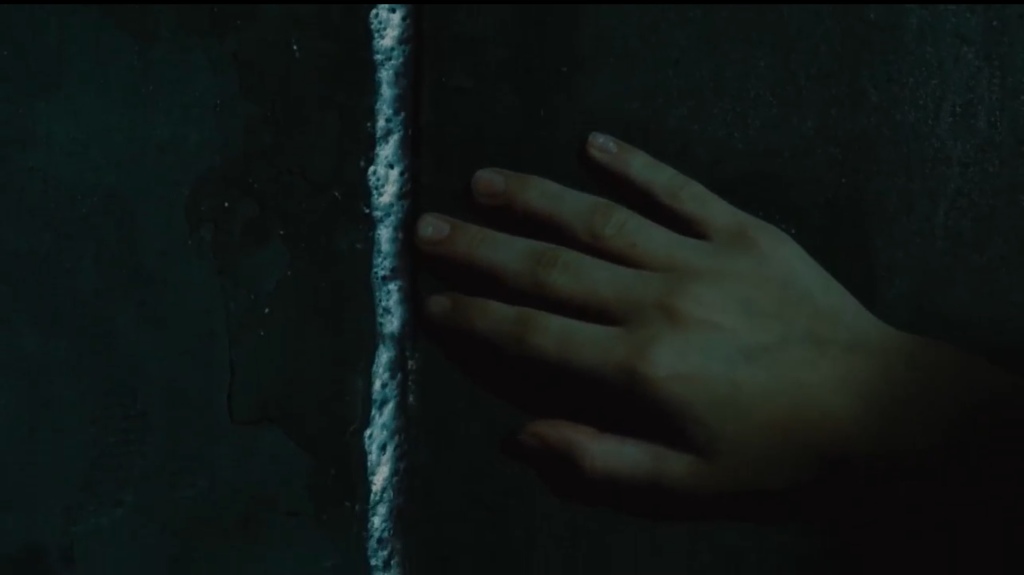
The soundscape of the hellish realm is extremely ambient and foreboding – incorporating the diegetic ominous breathing of the Pale Man which echoes throughout the corridor. Sharp, high-pitched violins are present in the mix, illustrating Ofelia’s vast uncertainty towards this foreign realm. Important objects also receive a sound, including the chair, doorway as well as the suspenseful sound of sand slowly falling through the hourglass. The ambient soundscape of the realm gradually rises in the mix as Ofelia approaches the Pale Man, signifying the danger that will unfold.
As Ofelia encounters the Pale Man, there is an appropriately utilised ‘swoosh’ sound in order to reinforce Ofelia’s anxious premonition. Ofelia then picks up the eyes on the plate, during which a repulsive ‘squelch’ sound enters the mix in order to disgust the viewer as well as signify their later importance. As the images displaying the various victims of the Pale Man are displayed, the harrowing cries of children are subtly incorporated into the mix. This informs the viewer of the Pale Man’s potential brutality.
As the fairies are released from their confinement by Ofelia, the diegetic chirping of their cries are promptly raised in the mix. At this point, the fairies appear excited and liberated in order to later juxtapose the fairies’ conflicting emotions. Ofelia then holds the fantastical key in her hand during which a jarring, piercing is attributed to it. This drastically emphasises its impending importance. As Ofelia unlocks and opens the door, the dramatic score gradually creeps into the mix which signifies that something new is about to be unleashed. Alongside this, Ofelia’s laboured breaths reinforce her distressed state of mind.
Ofelia then unsheathes the blade from its resting place, during which an artificial diegetic ‘sharp sound’ is added to the mix to emphasise its precision and deadliness. At this point, the score becomes much more dissonant in order to foreshadow the fact that something bad is about to occur. The fairies continue to flutter around the Pale Man, their cackling implies their arrogance. As Ofelia spots the luscious grapes, an appropriate harp enters the mix connoting heavenly imagery – perhaps referencing Adam and Eve. Ofelia is unable to resist the temptation of the grapes, during which the fairies vehemently attempt to prevent Ofelia from eating them. The viewer is able to fully understand the fairies’ communications through the use of sound alone.
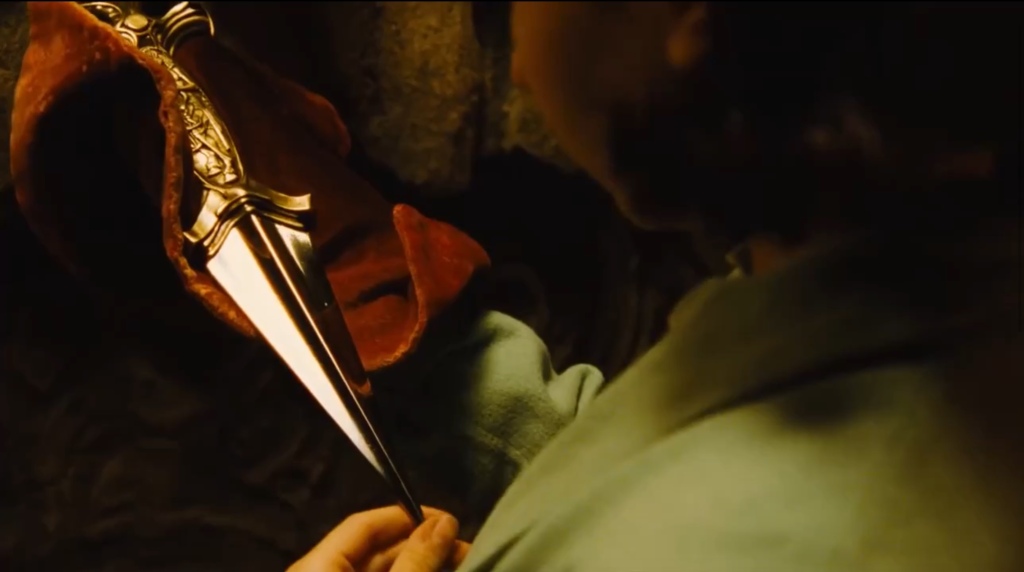
As the Pale Man awakens from his dormancy, an emphatic ‘cracking’ sound is extremely loud in the mix, informing the viewer that he has been dormant for a prolonged period of time. In order to further repulse the viewer, another squelching sound is added to the mix as the Pale Man places his eyes in his hands. Piercing and squealing cries can be heard which is reminiscent of a baby’s feeble, infantile cries. The texture of the score then thickens as the tempo begins to increase, indicating the imminent danger. At this point, the soundscape is extremely overwhelming – layering the dramatic score with the shrieking fairies and the growling Pale Man. Ofelia’s breathing begins to quicken, accentuating the rising tension. As the Pale Man begins to devour the fairies, the visceral crunching of the fairies’ bones are excruciatingly loud in the mix.
As the chase ensues, the Pale Man makes skeletal noises as he pursues Ofelia, his rattling bones are prominently featured in the mix. We then cut to a closeup of the hourglass, during which the sound of the sand falling rises in the mix, emphasising that she is running out of time. The objects of importance at a specific moment additionally spikes in the mix for a split second in order divulge the viewer’s attention. The score itself continues to become more urgent as Ofelia frantically scrawls the chalk on the wall. The chalk itself has a piercing and grating sound attributed to it, making the viewer extremely uncomfortable and uneasy.
As Ofelia finally escapes the diabolical realm, the Pale Man’s frustrated noises slowly lower in the mix, informing the viewer that the danger is over for now. Once again, the door ‘fizzes’ as it closes to reinforce its fantastical nature. Finally, the pounding of the floorboards is incorporated into the mix to reiterate to the viewer that danger still lurks beneath.
Mise-en-scène
Ofelia’s traditional clothing is resemblant of Anne Frank as well as many other Holocaust victims. This links to the theme of imprisonment that echoes throughout the film, reflecting Ofelia’s state of mind in the real world. The relation to the Holocaust also foreshadows the later appearance of shoes in the Pale Man’s lair. Ofelia’s fairy book is traditionally designed as the drawings are reminiscent of uterine imagery, emphasising Ofelia’s maturity. The use of pastel colours further exemplifies the fantastical atmosphere of the fairy tale. The steely blue colour palette of the room once again reinforces that Ofelia is imprisoned within Vidal’s territory.
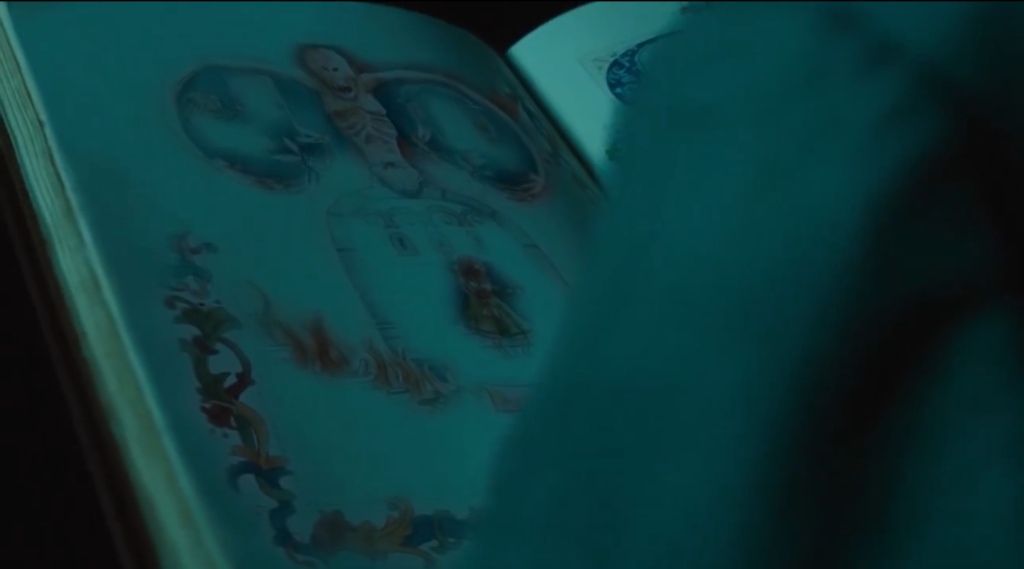
Ofelia then proceeds to crawl through the mysterious gateway to the Pale Man’s lair, this action of ‘crawling through the rabbit hole’ is extremely reminiscent of Alice in Wonderland, portraying Ofelia as a typical fairytale protagonist. The lair of the Pale Man has an extremely hellish colour palette, incorporating reds and crimsons into a monstrous visual spectacle. The wall is painted with blood, foreshadowing the Pale Man’s brutality towards his victims. The interior of the lair resembles a medieval dungeon, the pillars being reminiscent of a cathedral. This implies that the Pale Man is an ancient being, who has resided in this cavern for eternity. The appearance of the hourglass is symbolic of the theme of time that echoes throughout the film. It not only represents Ofelia’s time limit but it also is representative of Carmen’s numbered days. The hourglass’ design also resembles the yet to be seen Pale Man’s decrepit hand, emphasising that this realm is ruled by him.
Ofelia’s green clothing juxtaposes the devilish colour palette of the realm, symbolising her allegiance to the Faun. The large fireplace in the background appears forbidding, connoting further imagery of hell. The large table of tantalising food is once again resemblant of Alice in Wonderland. The food is predominantly sweet, luxury delicacies such as fruits and jellies which is representative of what a child might imagine a feast might entail.

The Pale Man’s design is symbolic of greed – his loose skin in tandem with his malnourished body represents his gluttonous tendencies which he has not indulged in for a long time. His eyes which lie on the plate are strikingly evil and ghoulish. The paintings which depicts the Pale Man’s brutality towards children is resemblant of the works of Goya, a Spanish romantic artist known for visceral paintings such as “Saturn Devouring His Son”.
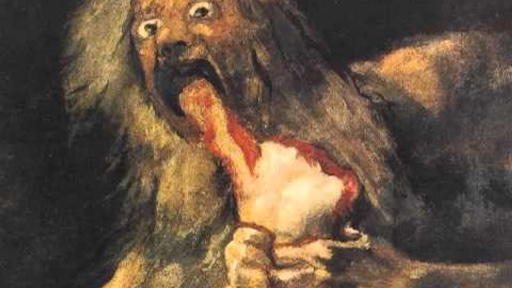
The colossal pile of shoes which lies beside the Pale Man’s table can once again be linked to the Holocaust. The shoes represent a potential future that exists in Ofelia’s world which is symbolic of the dangers of a fascist, totalitarian regime. Conversely, the key which Ofelia bears represents the hope of overcoming the Falangists. Later in the film, Mercedes utilises a key to free the rebels from the wrath of the soldiers, reshaping the future of Spain forever.
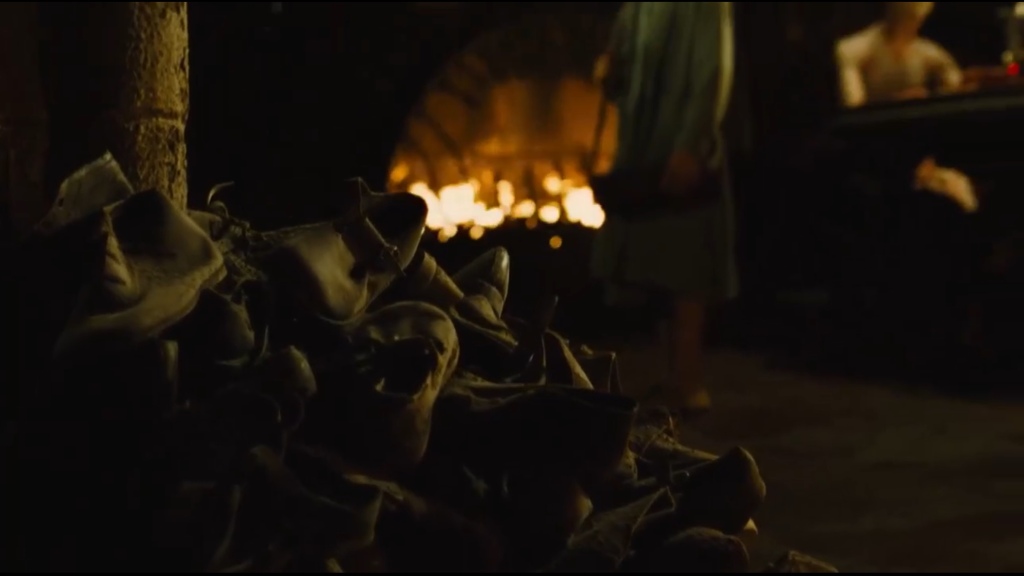
Ofelia then retrieves the dagger from behind the locked door, which is extremely ornamental and polished in design reinforcing its authenticity and uniqueness. The dagger also has potential symbolic relations to Macbeth, representing the theme of treason and betrayal against Vidal. The grapes that Ofelia eats are extremely appealing and voluptuously designed, further reinforcing the temptation they represent.
There are potential parallels between the antagonistic forces of Vidal and the Pale Man respectively. While the captain consumes baby rabbits, the Pale Man devours children which reinforces them as demonic and remorseless. The Pale Man’s hands are also bloodstained, once again linking to Macbeth and the act of betrayal. The fairies’ deaths are extremely brutal and graphic, their blood gushes into the Pale Man’s mouth. This symbolises the death of innocence and whimsicality the fascists enforce. Finally, during the chase sequence, Ofelia’s shoes are focused upon which is a key motif throughout the film.
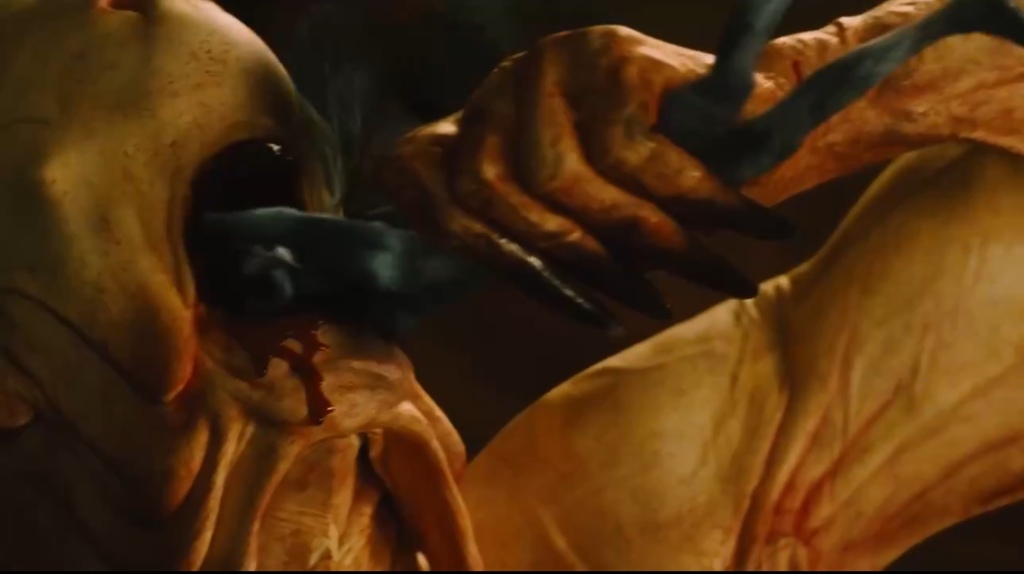
Editing
The opening scene utilises continuity editing, incorporating a glance object as we cut between Ofelia’s face and her book. At this point, the editing is slow paced which is representative of the calm before the storm. Ofelia’s narration is layered over the edit as a fade transition is incorporated in order to signify the passage of time. There is another glance object between Ofelia and the hourglass, directing the viewer’s attention towards it.
The lair itself has been heavily colour graded in post production, which attributes a hellish quality it. As the camera crabs left to display the copious amount of food, there is another glance object between Ofelia and the feast. As Ofelia observes her surroundings, we alternate between shots that imitate Ofelia’s perspective and objective shots through which we maintain focus on Ofelia.
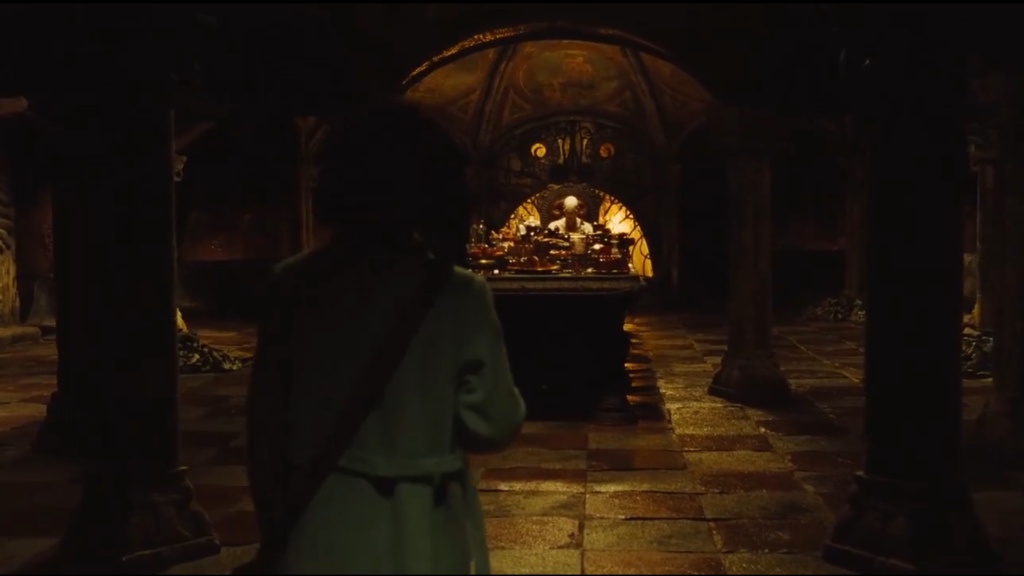
An example of parallel editing is utilised as we cut between Ofelia adventuring through the lair and the hourglass which ominously displays the amount of time she has left. As Ofelia becomes tempted by the grapes, the camera cuts between Ofelia, the grapes and the Pale Man in order to visualise her mental thought process. After this, the Pale Man begins to place his eyes in his hands during which the pace of the edit is slowed through the use of long takes, which build appropriate anticipation.
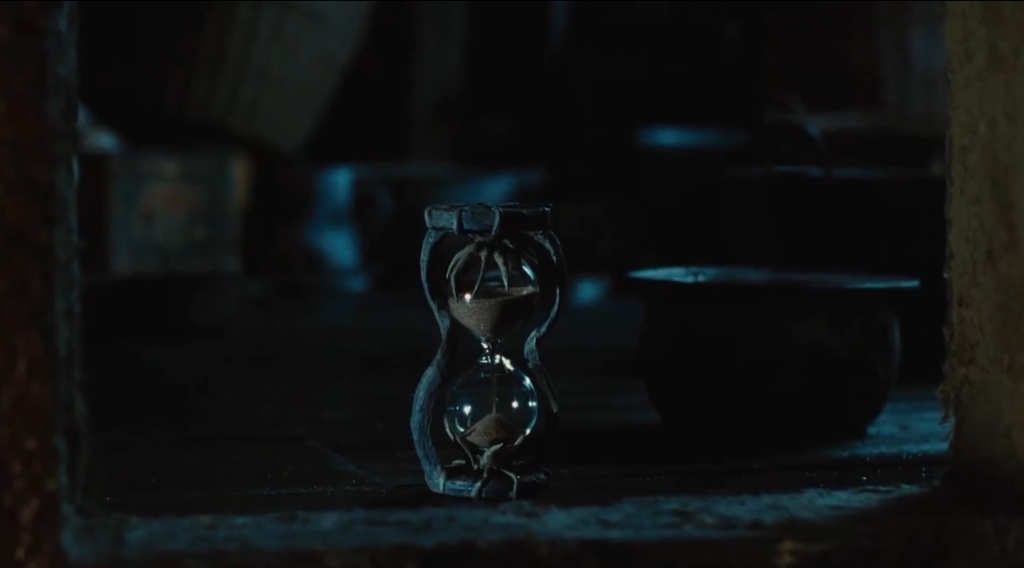
As the chase sequence ensues, another instance of parallel editing is implemented to portray the two perspectives of the chase sequence, being the fleeing Ofelia and the pursuing Pale Man. During the chase, the pace of the edit quicks through the use of frequent cuts in order to create a sense of urgency. As the door to the real world closes, there is a reactionary shot which depicts Ofelia’s hopeless expression. One more example of parallel editing alternates between Ofelia running away and the hourglass to further build tension during the chase. Finally, as the door to the lair closes, the pacing of the edit becomes sedate once again in order to signify that the danger is finally over.
Performance
During the opening scene, Ofelia appears to be completely immersed within her fairytale, becoming entranced by the moving illustrations. She also becomes rightly surprised as the chalk astoundingly melts the wall, pushing the door open with ease. These action imply that the normal laws of physics do not apply to the fantasy world.
As Ofelia enters the realm of the Pale Man, her explorative and curious nature is reinforced as she wonders through the corridor. She places the chair down ahead of time which emphasises Ofelia’s forward-thinking attitude. As she reaches the table, Ofelia is mesmerised by the feast and stunned by the motionless Pale Man. The viewer experiences these events at the same time as Ofelia which creates reason for empathy between the viewer and Ofelia.
Ofelia then becomes unnerved by the artistic depictions of violence between the Pale Man and the children, her breathing gradually quickens. She then proceeds to dextrously open the lock, demonstrating her resourceful disposition. Ofelia’s innocence and vulnerability is hinted towards when she is easily tempted by the forbidden grapes. She brashly brushes away the fairies, suggesting that she will happily dismiss the fantasy for a brief moment in order to indulge in a rare luxury. She proceeds to close her eyes as she devours the grape, savouring every morsel which reinforces the harsh conditions that she is forced to live under.
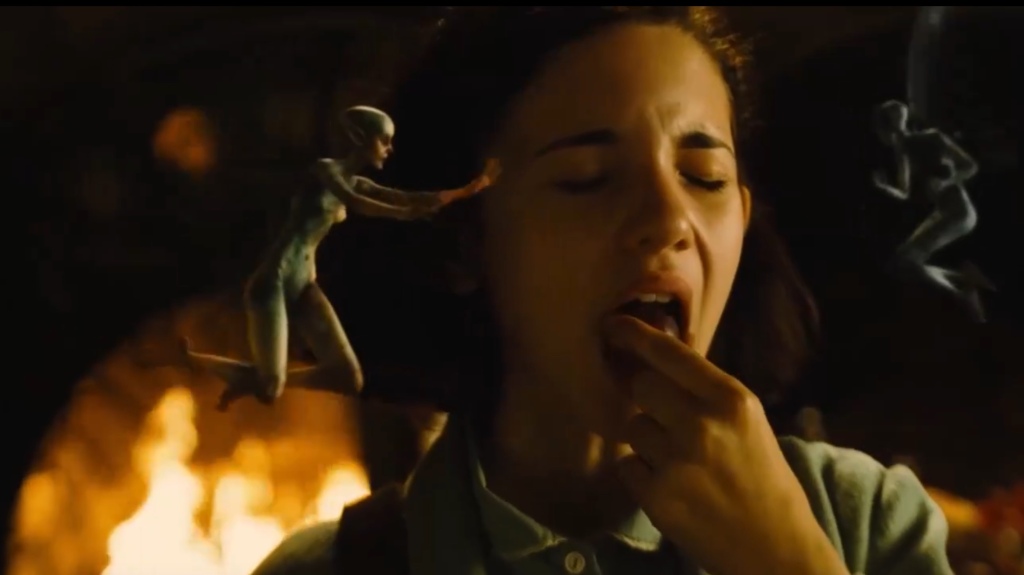
As the Pale Man awakens, it moves slowly and unsteadily which is characteristic of stereotypical fantasy monsters. Doug Jones is an actor typically known for playing monstrous creatures. Through his authentically unnatural performance, the viewer becomes fully immersed within the realm of the Pale Man.
During the chase sequence, Ofelia breathes rapidly which indicates that this is the peak of the tension. She desperately shouts into the corridor as the gateway to reality closes, emphasising her hopeless state of mind. Finally, Ofelia pragmatically seizes the chalk which reinforces her quick-thinking in dire situations.
